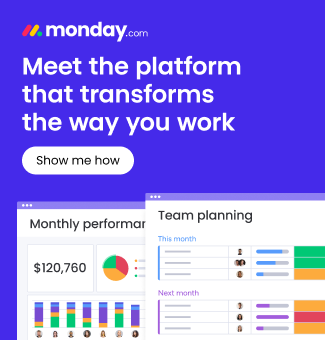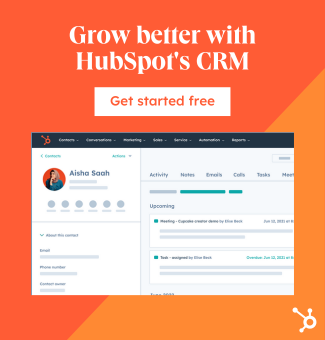Affiliates and Partnership Director at 1st Formations, Priscila Dexheimer, brings you her ultimate guide to starting an affiliate marketing business.
Having worked with global brands like Trip Advisor and The Leisure Pass Group, Priscila is an industry leader with 20 years of experience in affiliate marketing and advertising. She is a specialist in growing affiliate marketing program and driving financial growth through content and social influence.
In this guide, Priscila will tell you everything a beginner needs to know about getting started in affiliate marketing. You’ll find out how much you could earn and the potential start-up costs involved. She will also take you through the step-by-step process of setting up an affiliate business, including finding your niche, signing up for an affiliate program, and creating and promoting content for a successful affiliate marketing career.
What is affiliate marketing?
In a nutshell, affiliate marketing is based on the concept that an affiliate promotes products or services from a company (or multiple companies) and earns a commission in return. It is called a ‘performance-based partnership’, as companies will only pay their affiliates when they drive results for them.
All activity generated from the promotion is tracked via affiliate links, and the affiliate receives a percentage of the profit from each order referred from their website, blog, social media account, app, etc.
One of the main advantages for the affiliates is that there is no need to hold any inventory. Also, they typically don’t need to hire employees.
Potential earnings from affiliate marketing
As in any other job, you will need to work hard and spend a lot of hours and effort to see a significant financial return, and it can take a bit of time until you hit your goals. The good news is that the sky is the limit: the more conversions you manage to drive for your advertisers, the higher your potential earnings.
Whilst it’s difficult to estimate how much money you can make, as there are many variables to consider. A benchmark report by the Influencer Marketing Hub indicates that 75% of affiliates earn up to £40,000 per year, with 17% achieving higher incomes. 9% of affiliates did not disclose their earnings.
Bear in mind that affiliates promote multiple programs simultaneously, and earn commission from each of them. In addition, you may also secure a budget for specific promotions or placements agreed with each advertiser.
The upfront costs of starting an affiliate marketing business
Unlike many other types of business, the cost of getting started in affiliate marketing is relatively inexpensive. While it’s impossible to say exactly how much you’ll need, the upfront costs can be as small as under £100.
It all depends on how much experience and knowledge you already have, whether you want to take a beginner’s course and whether you want to pay for additional services when setting up a website or designing a logo, for example.
Let’s take a look at some possible upfront costs involved when starting an affiliate marketing business:
1. Marketing courses
If you feel you’d like to take a marketing course before you start your business, there are plenty of options. Whether you want to learn quickly, prefer online classes, or are looking for private tutorship, there’s something for everyone and every budget.
Also, if you’re unsure where to even start looking for a course, sites like Udemy are well-known and trusted, with thousands of courses and prices. To keep your upfront costs as low as possible, you could try a complete digital marketing course for just £15.99, which covers everything you’ll need to know about marketing products on social media, how to optimise your content and its discoverability, understanding analytics, and more.
There are also lots of free options, such as this marketing digital essentials masterclass. This will teach you about the importance of keywords, search engine optimisation (SEO) essentials, and navigating social media and email marketing.
When looking for the right course, pay attention to the reviews. This will give you a good idea of how useful it is.
So far, you’ve only spent up to £15. Now, let’s consider some other potential upfront expenses.
2. Website
When it comes to creating your blog or website, there are also lots of free and paid options, depending on your objective and how much you’re willing to spend.
For instance, WordPress offers a free plan that includes some of the following features:
- Unlimited pages and users
- Themes and patterns to customise your website
- Time machine for post edits
- Built-in newsletters and RSS (Really Simple Syndication)
For many new affiliate marketers, this is more than enough to get them started. But if you want additional features, there’s a premium plan that helps you build a unique website with powerful design and analytics tools from just £7 a month.
3. Keyword tools
To make sure you create the right content that your target audience can find, you’ll need a keyword tool. Realistically, there is no need to spend any money on this, as Google Ads is an excellent free option that gives you trusted data.
If you need some help starting a sponsored campaign, there are consultants and agencies that can help you. However, this will come at a cost – usually 10-15% of total ad spend.
4. Logo
Finally, like the above, there are free and paid options. Whether you have some design experience already or none at all, Canva is an excellent platform that can quickly and easily help you design the right logo for your brand. You’ll find lots of themes and templates to get you started.
Alternatively, you could opt for sourcing a freelance designer. Sites like Fiverr can connect you with talented designers based on your budget and requirements, and you could get a logo for as little as £21.
So, in total, you’ve spent £43 to get started in affiliate marketing. As I’ve mentioned, prices vary hugely in each area, and it is possible to spend thousands of pounds on start-up costs, if you do not want to tackle these tasks yourself.
How much time do I need to dedicate to my new business?
The answer to this question depends on your personal circumstances, motivations, and what you want to achieve.
You could be restricted by an existing full-time job, for instance, in which case you may only be able to dedicate 10 or 15 hours per week. But if you have more availability, you may want to spend 40 hours a week or more on it.
- A guide to starting a business while working full time
- 7 tips for managing money when starting up a business
But like any other business, your affiliate marketing venture will be as successful as you make it. Naturally, the more time and attention you dedicate to it, the more successful it’s likely to be.
The first few steps are potentially the toughest. Depending on your background and experience, for example, creating a website may require a lot of your time, if you have no previous digital experience.
Producing content and managing your affiliate program can also be time-consuming. Remember, this is the part that makes you money, so the more time and effort you apply, the more you’ll get out of it.
Having said that, there are lots of modern tools that can make running an affiliate business a lot easier and more efficient. For example, affiliate tracking software, payment management tools, analytics management, and task automation are all areas that help streamline the affiliate marketing process.
The key affiliate marketing terms
Before jumping into my step-by-step guide to starting an affiliate business, let’s briefly discuss some industry words and expressions.
Advertisers: This term is used to refer to the person or company that has the product or service to sell.
Affiliates: Also known as publishers, an affiliate can be an individual or a business that promotes other companies’ products or services in exchange for a commission. Affiliates can be bloggers, influencers, content creators, website owners, video producers, and so on. They have an audience base, which helps brands increase their online reach.
Affiliate network: This is the platform that connects affiliates to advertisers. Acting as an intermediary, the network enables affiliates to join advertisers’ programs and generate their unique links to start promoting brands via their online channels.
Brands: Another term for advertisers.
Consumers: They are the buyers of the advertisers’ products or services via the affiliate’s referral. Ultimately, they are the driving force behind affiliate marketing.
Payout: Affiliate marketing is performance-driven, meaning that affiliates are rewarded based on the results they drive for the advertisers they promote. This typically involves a commission structure, whereby the affiliates receive a percentage of the sales they generate for the advertiser – also known as PPS (pay-per-sale). This model ensures that the advertiser only pays for the results generated by an affiliate.
Other payout models:
- Pay-per-click (PPC): The affiliate marketer gets paid for clicks that have happened on the website, regardless of leads or sales generated. This is the least used model, as all the risk here is borne by the advertiser.
- Pay-per-lead (PPL): The affiliate gets paid for all the leads they generate. For example, leads can be generated via an online submission form, a pre-purchase, or a trial.
Publishers: Another term for affiliates.
Tracking: A typical affiliate program relies on unique tracking links provided to each affiliate. These links contain cookies, which are small pieces of code that track users’ online journeys. When a user clicks on an affiliate link and makes a purchase (or performs another desired action), the cookie records this information. This tracking enables the advertiser to attribute the activity generated to the respective affiliate, which will then trigger a payout.
How to get started in affiliate marketing
Step 1. Set up a limited company
The first thing you need to do is select an appropriate structure for your affiliate marketing business.
In the UK, the two most popular structures are limited companies and sole traders. There are advantages and disadvantages to both; however, in a limited company, shareholders (the owners) are provided with limited liability. This means that they are financially protected if the company were to fall into debt.
This is not a protection that is available with the sole trader model, as there is no distinction between the individual and the business. If the business accrues debts, the sole trader is fully liable. Essentially their assets are at risk. Because of this, we recommend starting your business as a limited company.
We can help set up your limited company from only £52.99. All you need to do is choose a company name, pick the company formation package that’s right for you, make payment, and then provide some basic information about your company. The process takes about 15 minutes to complete, then applications are typically processed in 3 – 6 working hours by Companies House. This means you can often start trading on the same day.
Take a look at our company formation packages
Step 2. Choose your niche
To help build credibility, authority, and most importantly trust among audiences, you must choose a niche and stick to it, as opposed to promoting a diverse range of products and services.
The easiest way to find a niche is to think about your own interests. You will find it much easier to develop content and make recommendations about products and services you know about and are based on your personal experience.
Also, consumers will be far more likely to trust you and consider your recommendations if you are knowledgeable about the product or service.
Before you start developing content, you need to make sure it is a viable business proposition. First, decide if there is a demand for this content. A good place to find this out is Google Trends.
Google Trends lets you know how many users searched for a particular topic in a specific region and period. When you see a consistently high level of searches in a topic, this is a sign that there may be a money-making opportunity.
There is also a need to assess your competition. A good opportunity arises when many people are searching for and asking questions about a niche, but relatively low content is published online about it. There are many paid tools to help you with this research, but you can also sign up for Google Ads for free and use their Keyword Planner.
Step 3. Decide on your affiliate marketing channels
Social Media
If you are starting from square one, where you are simply testing the waters and cannot commit to any upfront costs, your best bet is to leverage your existing audience on social media. You don’t need a website unless you are creating blog content, and you can simply use social accounts that allow you to post a link.
YouTube is one of the best social channels to promote products and services, because video content drives high conversion rates. It also allows you to extensively showcase the product or services you are recommending. You can easily place the affiliate links in the video description and comments sections.
Instagram can also be effective, but is slightly limited as you can only place affiliate links on Instagram Stories, which expire after 24 hours. There is also the option of utilising free linking tools such as Linktree, which will allow you to create a landing page to share multiple links.
Facebook is also a good option, as you can place links on posts and comments on your timeline, as well as groups or communities. You can even create a business page to build a specific audience and avoid bombarding your network with unwanted content.
Blogs and websites
Even with a limited budget (or no budget at all), there is a lot that you can do to start a blog or website. As I mentioned earlier, platforms like WordPress and Wix offer affordable (or free) plans to create and host them.
- 10 things your company website absolutely must have
- A guide to selling products online
- How to create a website for a new business
When you are ready to commit to some costs, I would recommend you look for paid options that offer reliable hosting, a domain name, and a professional email address. There are endless themes to choose from if you are not experienced in building a website, and you can use stock images to make it more visual.
Emails
Should you have an email list, this is another place where you can get started with no investment. Simply add the affiliate tracking links to your newsletters, and these will take your audience to your partners’ websites.
If your audience takes the desired action (for example, sign up for a trial, purchase a product or service, etc.), you will receive the commission. Remember that the more targeted your email list is, the higher the number of people who might be interested in your recommendations and convert.
Step 4. Select your affiliate marketing programs
Joining the right programs that resonate with your audience and offer fair commissions will help you achieve your goals. Here are some steps to help you make an informed decision:
Research various affiliate networks and programs
Begin by researching different affiliate program available in your niche. Your priority should be promoting advertisers with brands you are familiar with and feel confident promoting.
After you compile a comprehensive list of brands that are aligned with your content, it’s time to check whether they have an affiliate program in place. Visit their website or search for it online to apply. In case you can’t find any online references, you can always reach out to them directly.
Once you have exhausted your list of preferred brands to partner with, it’s time to find out what else might be available to you in the most popular affiliate networks. Among others, these include AWIN, Partnerize, Amazon Associates, ShareASale, CJ Affiliate, TradeDoubler, and PartnerStack.
The vast majority of affiliate networks will be completely free to join as an affiliate; however, some of them might charge you a small fee.
These affiliate networks will generally have a marketplace area, enabling you to explore individual affiliate programs. Here is what’s important to consider:
- Product/service category: As obvious as it might seem, products or services must align with your niche, audience interests, and geographics. For example, you wouldn’t want to promote a brand in the UK that only caters to US customers.
- Commission structure: Check the commission rates to see whether they offer flat fees, percentage-based commissions, or recurring income models.
- Cookie duration: The longer the cookie length, the higher the chance of earning commissions on future purchases by the same customer. The most popular cookie duration is around 30-60 days.
- Payment methods: Payment thresholds, bank account types, currencies, and lengthy payout scheduling are all things to bear in mind.
- Support and resources: It’s best to partner with brands that offer marketing materials, affiliate resources, and a responsive support team that you can rely on to help you sell more.
Amazon Associates
Overwhelmed with so many affiliate networks and programs? You may want to consider dipping your toe in the water by joining the most popular affiliate program in the world: Amazon Associates.
With over 350+ million products (including marketplace sellers and Amazon’s own inventory), there is something for everyone. Electronics and accessories, home and garden, fashion, beauty, health, books – you name it, they have it.
Commission rates will vary depending on the margin of each product, ranging from 1% up to 20%. The drawback is that their cookie length is only 24 hours, which means that between the click and the purchase, customers will have a somewhat limited time to decide. If they take longer to complete the transaction, you are not entitled to the commission.
Consider program reputation and credibility
It’s worth looking at the program’s reputation. Check reviews, forums, and industry reports to better understand the experiences other affiliates have had with these programs. A well-established and reputable program is more likely to provide adequate support and timely payments.
Assess conversion rates and earnings potential
A robust affiliate program would likely provide you with information regarding conversion rates, average order value, and average commission (in cases where there is a tiered structure in place). With this data, you can run the numbers to estimate your earnings potential with each specific affiliate program you join.
Consider the terms and conditions
It’s important to carefully review the terms and conditions of the affiliate program you are interested in applying for. There are often restrictions, policies, and rules that might affect your promotional strategies. So, it’s important to ensure that the advertiser’s terms are aligned with your marketing approach.
Apply to join
After comprehensive research, you should be ready to narrow down your choices and select programs that meet the criteria best suited to your niche, audience, and revenue goals.
Advertisers will usually require you to briefly explain how you are going to promote them, and ask you to provide the marketing channels you own for assessment. Make sure you share as much information as possible, to avoid having your application declined. Also, don’t hesitate to apply to multiple programs and test which ones work best for you.
Step 5. Integrate assets and evaluate your performance
After your application to your preferred affiliate program has been accepted, it’s time to start integrating their links into your content. Aim to monetise all the channels you own (your blog, social media accounts, emails, etc.) and test different approaches. For example, integrate banners, use a button with a call to action (CTA), or have the tracking links seamlessly placed within the content.
You must keep a close eye on your performance and take advantage of the network’s reporting tools, to measure the effectiveness of your efforts. Be sure to analyse the data to understand which programs perform well and which might need adjustments.
Optimise for growth
Performance should be regularly assessed, to identify potential issues and opportunities to boost your earnings. A good affiliate marketer checks basic metrics such as clicks and conversions daily, to ensure everything is working as expected.
Other metrics can be checked less regularly (weekly or monthly), but will likely also indicate areas of improvement. For example, considering the program’s average order value. If you are not driving conversions at the same average order value compared to other affiliates, it might be a sign you should be promoting a higher-value product or service, which in turn, would earn you more.
You can adapt your strategy and connect directly with the advertisers you are working with, to get bespoke recommendations on how to best promote them. Ask for exclusive advantages for your audience, negotiate your rates, propose placements or special features, etc.
While doing this, keep exploring new programs, as there might be new advertisers interested in gaining visibility on your channels, or willing to reward you more competitively.
Step 6. Create content that converts
You will need a strategic approach to craft highly converting content, to convince your audience to take action. Let’s have a look at the essential steps to help you create effective content:
Deliver valuable and informative content
Anything you publish online should be informative and engaging. Whether it’s a blog post, video, podcast, or social media content – make sure it educates, entertains, or solves a problem for your audience.
Don’t forget that valuable content will help you establish yourself as an authority in that subject, ultimately fostering trust and increasing the likelihood of conversion.
Craft compelling headlines
This is the first thing your audience will see, and it plays a crucial role in grabbing their attention. Compelling headlines should evoke curiosity, highlight benefits, or address pain points.
A good headline can significantly increase click-through rates, which will lead to more traffic to your affiliate links. Headlines starting with: ‘Top 10 Products to…’, ‘Top 5 Ideas for…’, or ‘Top 20 Things to Do…’ tend to entice people to click and learn more.
Use visual resources
Incorporating eye-catching visuals into your content can significantly increase its effectiveness and digestibility. Not only does it make the content more interesting, but it also breaks up any larger pieces of text, making your content easier for users to absorb.
Imagery should always be of high-quality resolution and can include infographics and videos. Visuals can often help convey information more effectively and keep your audience engaged for longer.
Add your tone of voice, personal stories, and testimonials
As a general rule, try to be relatable by sharing your personal experiences or success stories linked to the product or service you’re recommending. Authenticity builds trust, and when your audience sees real-life examples of how a product has helped others, they feel more compelled to try it themselves.
Adding your own voice and personality to your content is also something that will set you apart from the competition and make your recommendations more memorable.
Implement a call to action
Every piece of content you publish should include a clear call to action. This might simply encourage your audience to click a button or link, sign up for a newsletter, register for a trial, or make a purchase.
A well-crafted call to action guides your audience towards the action you want them to take. This ensures a clear purpose and end result for the content that you share. Without it, you are essentially allowing users to engage and drop off without any conversion, making it an aimless user journey.
Optimise for search engines (SEO)
Make sure your content is fully optimised for search engines to increase its visibility. To achieve this, you will need to use the relevant keywords not only in your main content, but also in the meta descriptions and alt tags for images.
A meta description is the general summary of your content that appears on the search engine’s results page. It should be clear and concise and include a specific action that you want the reader to take from it. For example, ‘find out’, ‘read more’, or ‘click here to’.
Alt tags are image descriptions attached to your visual content. If a user lands on your page and fails to load the images properly, your alt tags provide a written description for them.
Ultimately, a higher ranking on search engine results will drive more organic traffic to your content, which will increase the chances of conversion.
Monitor and analyse performance
Constantly monitor your content performance through analytics.
You will want to check and improve click-through rates, conversion rates, and other relevant metrics to assess what is working and what needs improvement. The insights you gain will help you refine your content strategy and optimise for better results.
Step 7. Build and engage your audience
We all know content is king, but never underestimate the power of fostering a loyal audience. Your success as an affiliate marketer relies on the genuine connection you manage to establish with your target demographic.
Here are some proven strategies that can increase both reach and engagement:
Cross-channel promotion
Maximise your content distribution by promoting it across various channels. Cross-channel promotion allows you to align your content on different platforms to convey a consistent message and strengthen brand visibility.
You can take advantage of social media platforms, email marketing, and any other relevant channels to reach a broader audience. With consistent and strategic promotion, you will significantly increase your reach.
Interaction
Actively respond to comments, messages, and feedback from your audience on all the different channels you are using to distribute your content. Create a sense of community by acknowledging your audiences’ contributions, questions, and opinions.
Remember that frequent interaction builds a more personal connection and trust, showing your audience that you are responsive and that their cooperation is valued. In turn, this makes them more likely to return to your channels and engage with your future content. Higher levels of engagement are also a ranking factor for most social media channels, which will increase the visibility of your content to new potential viewers over time.
Incentives
Encourage engagement by providing incentives. Incentives not only attract new followers, but also reward existing ones, fostering a sense of appreciation and loyalty. Think of exclusive content, discounts, giveaways, or exclusive access to a specific feature offered by the advertisers you work with.
Advertisers are usually keen to get more visibility across affiliates’ channels. You should be able to secure freebies or exclusive discounts for your audience, as well as an additional budget to feature them.
Webinars and Q&As
Live sessions can be an effective means to connect with your audience in real-time. This creates a more personal experience, allowing your audience to get to know you better, not to mention enabling you to grow your mailing list with the details provided by everyone who signed up for it.
One of the best platforms to host live webinars on is YouTube, but Instagram, Facebook, and TikTok are also effective hosts. When choosing the right channel, think about where you connect with your audience, which one you might get more interaction with, and which is the easiest for your audience to access.
Step 8. Disclose affiliate relationships and legal compliance
As an affiliate marketer, you must clearly disclose the affiliate partnerships you hold with different advertisers. This informs the audience that you will receive some form of compensation if they were to take action through the affiliate links you are promoting.
By failing to display these disclaimers properly, you might be subject to monetary penalties or legal disputes. Your website or blog can also be shut down and any outstanding affiliate commissions voided.
Requirements to consider when writing/publishing an affiliate disclosure:
- Frequent: It must appear on every post or page where you are promoting an advertiser for which you may receive compensation (or have done so in the past, even if the partnership has ended).
- Clear: It should be obvious that you may receive compensation from the links or content included on your channels. This is especially important if you are comparing or ranking brands, and the commercials of your partnerships could affect the order you are placing them. Do not use vague statements such as “We may include affiliate links to keep this website running.”
- Conspicuous: It needs to be easily visible. The font should be at least the same size and the same colour as the main text on the page.
- Require no action: It must be immediately evident to visitors reading your content regardless of what device, operating system, or browser they are using to access it. A visitor should not need to scroll, click, tap, hover, or perform any other action to learn that you may receive compensation.
Please remember that affiliate disclosures are required not only on websites and blogs, but also on social media channels you are using to promote products and services from your partners.
Final words
In the world of affiliate marketing, you will need a good mix of persistence, adaptability, and dedication to meet your desired targets. I’m also a big believer that transparency with both your audience and the advertisers you promote will take you a long way.
When all parties involved in a partnership are open and honest about their practices, it fosters a sense of trust and helps not only in the decision-making process, but also in building long-term relationships.
You will soon realise that as in any business, there will be many obstacles and setbacks; however, you should see them as valuable learning opportunities. You will need to adapt to evolve with the ever-changing digital landscape, and stay tuned to industry shifts, as well as technological advancements. Your dedication will fuel the consistency required to develop high-quality content, build trust, engage your audience and advertisers, and as a result, improve metrics and ultimately, your earnings.
Together, these qualities can do wonders in achieving success in affiliate marketing.
If you have any questions, comments, or feedback, please feel free to share them in the comments section below.
Please note that the information provided in this article is for general informational purposes only and does not constitute legal, tax, or professional advice. While our aim is that the content is accurate and up to date, it should not be relied upon as a substitute for tailored advice from qualified professionals. We strongly recommend that you seek independent legal and tax advice specific to your circumstances before acting on any information contained in this article. We accept no responsibility or liability for any loss or damage that may result from your reliance on the information provided in this article. Use of the information contained in this article is entirely at your own risk.


















Join The Discussion